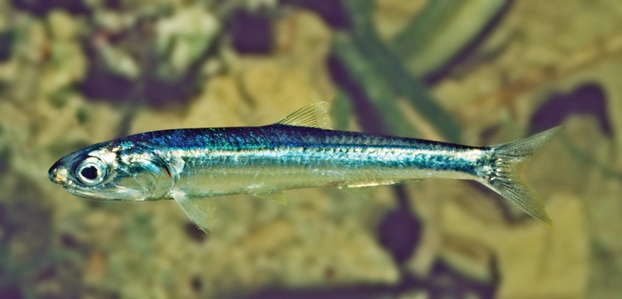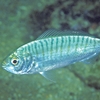General Description
Body long slender, slightly compressed; snout bluntly rounded, protruding in front of the very large mouth; jaws reaching well beyond eye; dorsal fin short-based, on middle of back, anterior rays much longer than posterior rays; caudal fin deeply forked. Greenish above, silvery white below, with broad silver stripe along midsides; head mostly silver, fins mostly transparent. To 15 cm.
Biology
Anchovies are of great commercial importance throughout their range. They form large, dense schools in offshore and inshore surface waters.
Habitat
Offshore and inshore waters, in depths of 0-200 m.
Open water
Distribution guide
New Zealand and western, southern and eastern Australia.
Species Group
Fishes › Sardines, pilchards and allies
Depth
Shore (0-1 m)
Shallow (1-30 m)
Deep ( > 30 m)
Max Size
15 cm
Commercial Species
Yes
Global Dispersal
Recorded in Australia
Conservation Status
- DSE Advisory List : Not listed
- EPBC Act 1999 : Not listed
- IUCN Red List : Not listed





